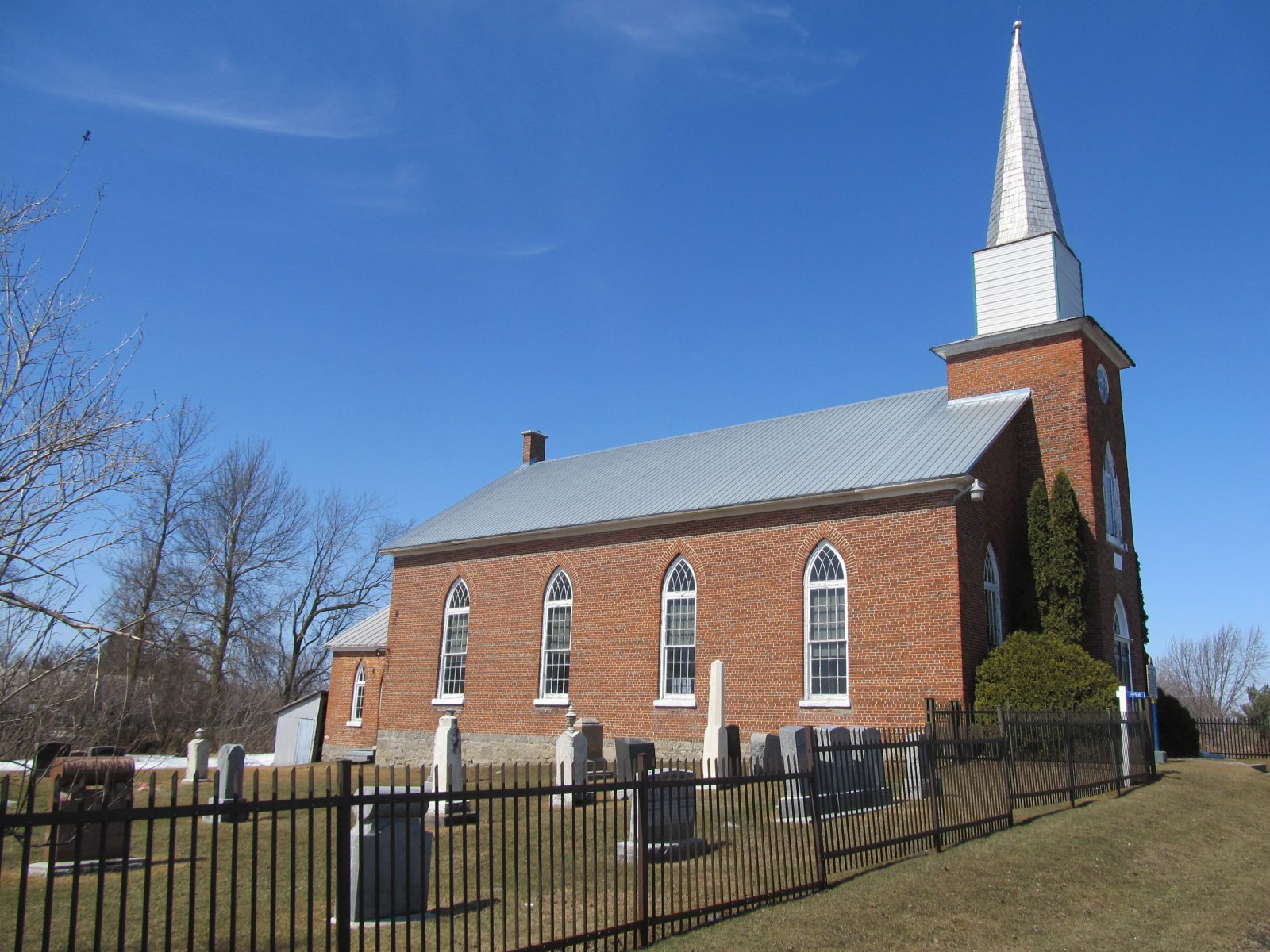ST. ELMO, Ontario – Two historically and architecturally interesting 19th century churches stand a stone’s throw away from one another at the crossroads of St. Elmo, in Glengarry, Ontario’s easternmost county. The churches aren’t used anymore, haven’t been for years, and their future is uncertain.
That’s not for want of trying. The township of North Glengarry, the local museum, the local historical society, a good many local people, and the Presbyterian Church in Canada are all concerned. Losing the buildings is unthinkable. But exactly how they are to be preserved and re-purposed is unclear. There are complications with location and re-use, and though the buildings remain in good shape, time is ever the enemy.
The two churches are the Congregational Church, a large, square pioneer log structure erected in 1837 (making it the oldest Congregational church in Canada), and that stone’s throw away, the Gordon Church, from 1864, a prominently-set, red-brick, lancet-windowed Gothic Revival perfect country church.
There is not much to St. Elmo other than the two churches. It’s in a prosperous agricultural area a few kilometres north of Maxville, Ontario, a village whose normal population of under a thousand swells to 30 or 40,000 the first weekend of every August when it hosts the internationally-renowned Glengarry Highland Games.
A Congregational parish was organized among Highland Scottish settlers around St. Elmo in 1823, and the hand-hewn cedar log building – standard construction for all buildings in the area at the time – was put up 14 years later. Congregationalism, wherein individual congregations maintain considerable independence, originated in 16th century England and found widespread support in pioneer-era Canada. There were 111 Congregational churches in Canada in 1925 when the Congregationalists voted to join the United Church of Canada.
Back in the mid-19th century, the St. Elmo Congregationalists became embroiled in the Canadian version of the long-running dispute between the official Church of Scotland and the breakaway Free Church of Scotland. In the 1860s, a Free Church minister, Rev. Daniel Gordon, was barred from the Congregational Church, and he did the only reasonable thing: he built his own church, that handsome red-brick Gothic Revival one just a stone’s throw away.
Rev. Gordon’s son, Charles Gordon, born at St. Elmo, became a minister himself, serving mostly in western Canada. But he became far better known under the pseudonym Ralph Connor as the author of dozens of widely-read adventure novels including some set in the St. Elmo area like The Man from Glengarry and Glengarry School Days. He’s not much read today, outside Glengarry, but a century ago, he became Canada’s first internationally successful novelist.
Both St. Elmo churches had some good years, but their congregations dwindled around 1900 as fine new churches were built in nearby Maxville. Services ended at the Congregational Church in 1912, and in 1920, the building was sold to the Gordon Church as a hall. The Gordon Church itself hung on until 1947 when it amalgamated with Maxville Presbyterian Church and was opened only a few times a year. Finally, in 2017, local parishioners, not sure what to do with the buildings and unable to support them, gave them to the Presbyterian Church in Canada national office. The national office had no wish to demolish them, but not surprisingly, isn’t sure what to do with them either.
The churches’ clouded future alarmed the community. The township’s heritage committee called for ideas. The Glengarry Pioneer Museum at nearby Dunvegan, which hosts a number of relocated buildings, was understandably reluctant to take on any others. Conversion to residences is conceivable, but both buildings would have septic bed issues, the Congregation Church has title complications, and the Gordon Church’s graveyard laps at its very walls making sale or conversion problematic.
And so they sit, beautiful, historic, landmark buildings, still solid though empty and a little forlorn, waiting. Their problems may well be surmountable, but the road to a happy ending is not yet clear.



